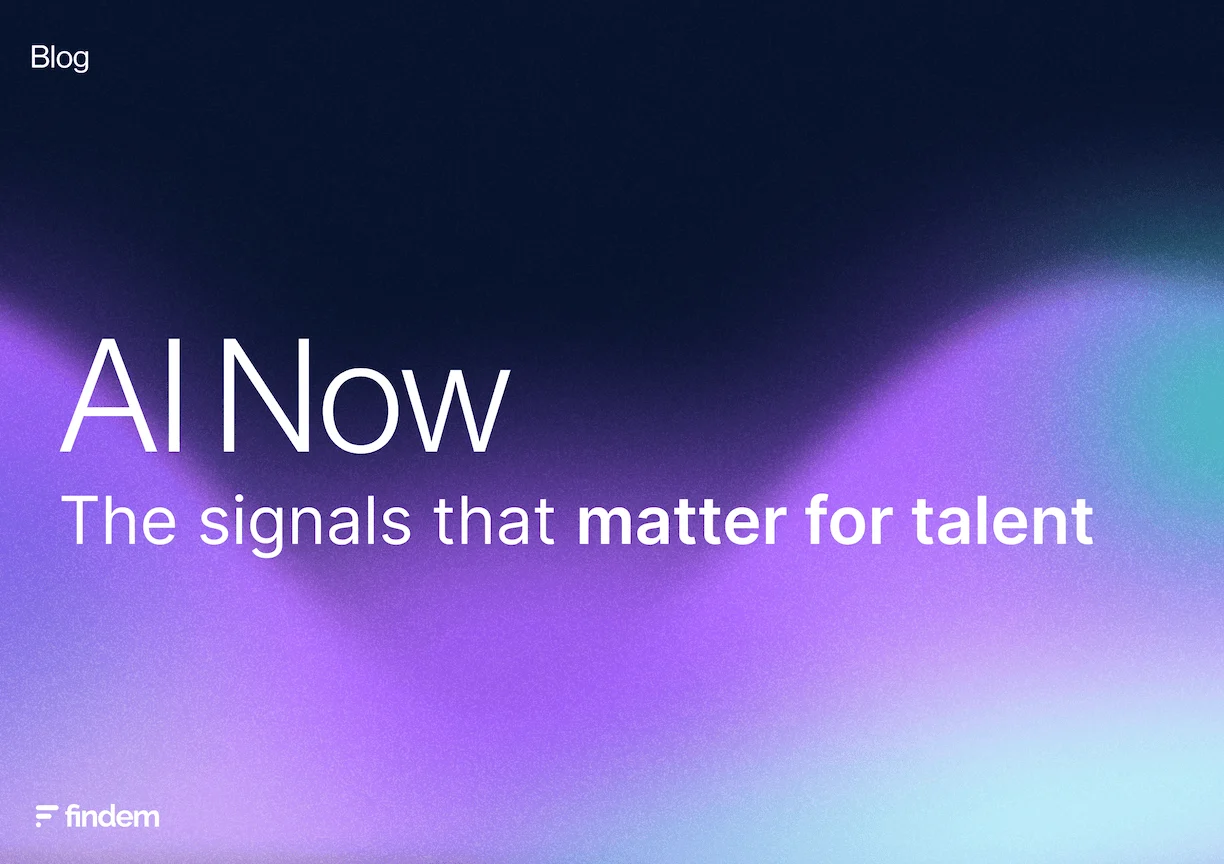.svg)
Bridging the gap: Leveraging data to transform Veteran recruitment
.svg)

.svg)
More than 200,000 people leave the active duty military each year to enter the civilian workforce, joining 7.8 million working-age Veterans in the United States. The talent pool of Veterans isn't just vast, but filled with candidates who offer unique skills and qualities — resilience, problem-solving, and loyalty — that most employers value but miss in the search for talent.
This disconnect isn't due to a lack of talent, but rather, from a lack of data. Military roles don't directly translate to civilian ones, leaving companies unsure of how to map Veterans' experience with their workforce requirements. That means a Veteran’s resume will rarely translate into a civilian job search.
With better data, employers can gain the insights needed to match Veterans to the right roles, opening up new possibilities for both job seekers and employers.
Using data from Findem's Talent Data Cloud, we've curated insights to show how we can begin to break the "language barrier." Keep reading to see how data is enabling teams to match Veterans' skills with job opportunities more accurately and inclusively to bridge the gap between military experience and civilian workforce needs.
The "skills" gap in Veteran hiring
Military job titles and experiences often don't map easily to civilian roles, creating a barrier for employers and leading to missed opportunities. Titles like "Operations Specialist" or "Cryptologic Technician" carry rank and responsibility within the military, but lack clear civilian equivalents.
To unlock the potential of Veteran talent, employers need to understand how military skills translate into civilian qualifications. By using data to map Veterans' attributes — skills, certifications, and experiences — talent leaders can access a deeper level of insight and create tailored searches that bring out the value Veterans can add to their teams.
Veterans must often contend with stereotypes — such as assumptions that they're "rigid" or overly structured — that can further skew perceptions.
The reality is that Veterans possess strength in adaptability, resilience, and leadership — traits that almost always contribute to positive employment outcomes. Many Veterans have the ability to handle challenges and chaos, coming out stronger on the other side with "post-traumatic strength."
With the right data, employers can gain a clearer understanding of the unique qualifications Veterans bring, reduce bias, and reveal the full potential for Veteran talent.
The Veteran workforce landscape today
With more than 7.8 million working-age Veterans in the United States, the talent pool is expansive, eager to contribute, and demographically representative of the US as a whole.
For most Veterans, employment after military service is a high priority. According to our data, 25% of Veterans secure jobs in advance of the transition to civilian life, while nearly half start their job search immediately. Of the nearly 200,000 Veterans that enter the workforce each year, 73% are actively seeking a job.

More than being eager job seekers, Veterans outperform the broader population in areas like tenure, performance, problem-solving, and leadership. The unemployment rate for Veterans is 3.0%, lower than the 4.1% rate among non-Veterans in the US.
Veterans also find natural fits in industries such as government, defense contracting, IT, and healthcare, where their skills and security clearances can be significant assets. And they're equally equipped to excel in sectors like manufacturing and logistics, where their technical training and adaptability easily translate.
What makes Veterans unique?
Veterans enter the workforce with a unique global perspective. Their experiences are shaped by high-stakes environments around the world, with hands-on technical training in fields like engineering, cybersecurity, and logistics.
To solve the data problem, you need a way to search for attributes that match military service skills with sought after skills. Findem's 3D candidate profiles include curated attributes that highlight skills shared by Veterans in the workforce. When we examine the pool of Veteran talent, these attributes stand out:
- Security Clearance: A significant advantage in government and secure sectors.
- Successful Exit Experience: Veterans often have experience with corporate-like events, such as acquisitions or large-scale reorganizations, that require adaptability and problem-solving under pressure.
- Trailblazer Engineers: Military technology training equips Veterans for innovation-driven roles in engineering and product teams.
- Bilingual Skills and Global Experience: Veterans with language skills and international experience bring valuable insights to multinational and diverse teams.
- Mission-Driven Academic Achievers: Veterans often pursue higher education post-service, achieving distinctions like the Rhodes Scholarship or Fulbright, which demonstrate a commitment to excellence.
Transform Veteran recruitment with the right data
Data is the key to a more inclusive hiring landscape and bridging the language barrier that Veterans face.
Findem's Talent Data Cloud, built on a foundation of 3D data, connects people and company data over time, drawing insights from 100,000 sources. This powerful data can turn military experience into terms that hiring managers understand, aligning Veteran skills with civilian job requirements and promoting more equitable hiring.
By leveraging better data, talent leaders can automatically identify the most qualified Veterans for open roles, providing these candidates with the visibility they deserve. Request a demo to see how Findem's talent data can help transform your Veteran hiring efforts.










